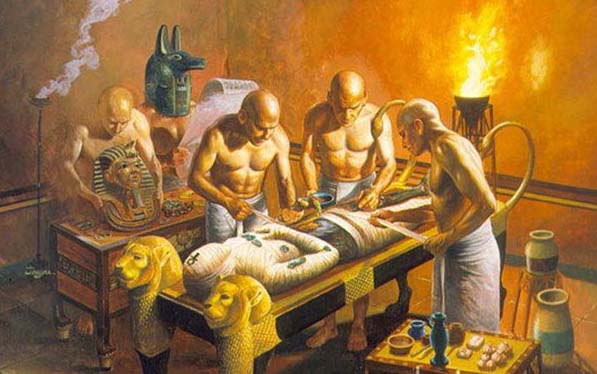
The Ancient Egyptians were keen believers in the concept of the afterlife and the resurrection of both the body and soul. Those set of beliefs originated from their observations across their daily life such as the sun falling across the western horizon each evening and then being reborn once again the next morning in the east. The ancient Egyptian soil would sprout new life from the planted grain. The moon would change its shape each year.
The ancient Egyptians believed in a sense of balance, law & order, and the promise of a new life after death. They utilized many scientific tools and procedures in order to preserve the dead which is called the mummification process which was performed by highly skilled specialists. This honorable tradition was a rite of passage for all the ancient Egyptians to seek to enter the afterlife.
This article endeavors to provide a comprehensive exploration of Ancient Egyptian mummification, primarily focusing on ancient Egyptian practices while also touching on broader aspects of mummification across cultures. By delving into various dimensions of this intriguing funerary tradition, our aim is to enlighten readers about the diversity of individuals who underwent mummification, the historical backdrop that nurtured its development, and the profound reasons that compelled ancient Egyptians to preserve their deceased. Through a meticulous examination of the intricate mummification process, we seek to unveil the techniques employed, while dispelling common misconceptions. Furthermore, our goal extends to conveying fascinating facts about ancient Egyptian mummification that might surprise and captivate our audience.
Curious about history's enigmas? Immerse yourself in the captivating List of Famous Ancient Egyptian mummies. Unveil a curated list of these enthralling relics, each holding secrets of a rich civilization. Embark on a journey of discovery and trace the steps of the past through these remarkable archaeological treasures.
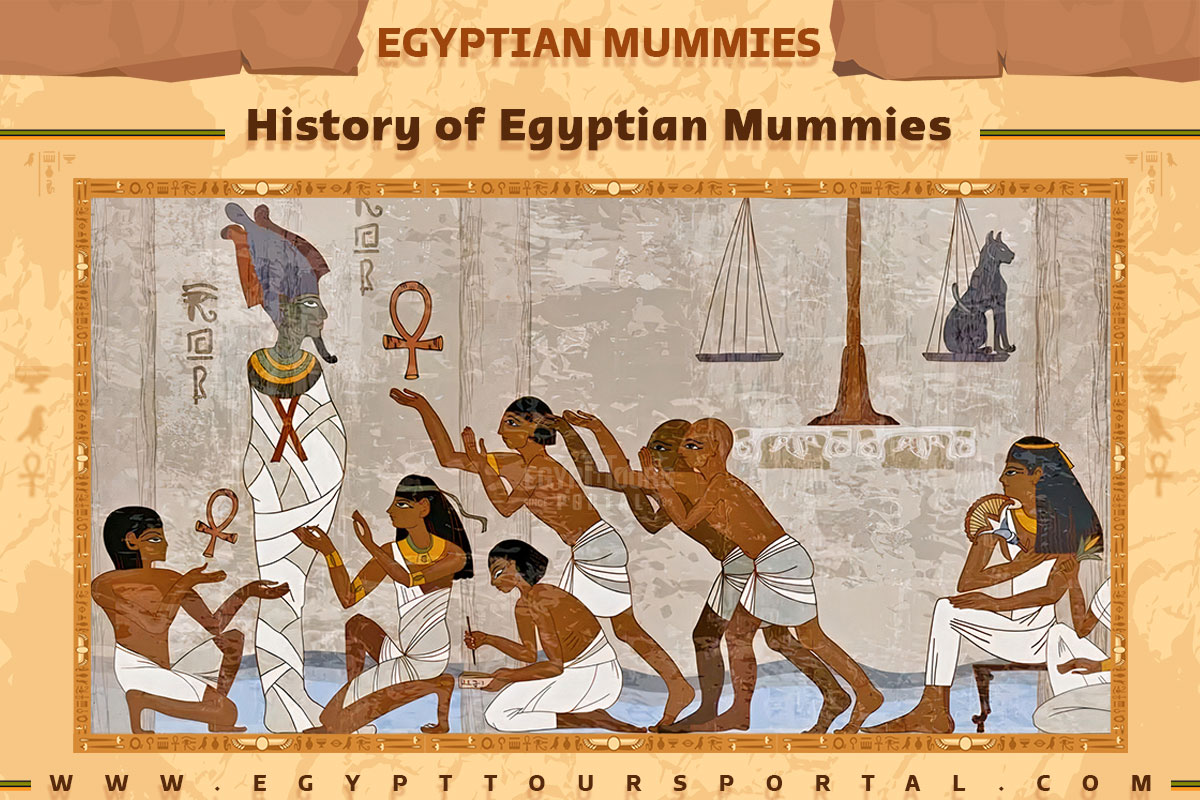
The practice of mummification was highly widespread starting from the early days of ancient Egypt. The key behind the mummies occurred in the prehistorical times when the air and dry sand with the lack of rainfall preserved many bodies in dug shallow pits. In the 4th and 5th dynasties about 2600 BC, ancient Egypt began to mummify their bodies according to their religious teachings. The art of mummification was completely perfected during the Third Intermediate period (1070 – 712 BC). Across the next 2000 years, the practice of mummification continued and developed all the way to the Roman Period (30 BC – 364 BC). With each period, the mummification quality changed according to the price that was paid.
Highly sophisticated, and preserved mummies date from the 18th and 20th dynasties during the New Kingdom of Egypt (1550 – 1070 BC). In the late period around 450 BC, the great historian Herodotus documented the entire mummification process. The Mummification process faded away in the 4th century when Rome ruled Egypt was a Christian nation that ruled out the mummification process was forbidden. Many scholars and historians believe the mummification process at a lost art but many elements of the process can be found in the way current people honor their loved ones.

Before the mummification process evolved to its finest form, the corpse was put in a pit in the desert in a fatal sleeping position with all their precious personal items. All the water would be absorbed from the body thus preserving it. The body was wrapped in animal skins inside a wooden or pottery coffin, lined with many mud bricks, and covered entirely so the preservation procession to be more intact. The internal organs were removed, dried, and put in jars to better improve the mummification process.
The process was performed by skilled priests who extracted the brain from the nostrils with an iron hook then the flank was opened the content of the abdomen was totally removed. The cavity is cleaned and filled with cassia and myrrh plus other aromatic substances. The body is sewn up and covered in natron entirely for 70 whole days, afterwards, the body is washed and put in linen bags for 35 days to draw all the moisture across all the tissues. All the removed organs such as lungs, liver, stomach, and intestines, were then put in Canopic jars with dry natron, the heart was left in the body as the core of intelligence.
The body was then filled with lichen, sawdust, cloth scraps, and Nile mud to make the body flexible. The Ancient Egyptians would then replace the eyes with linen pads and small cooking onions. In the Middle Kingdom, it became a standard to place a mask over the face of the mummy. Prayers from the Book of the Dead were added to the mummy to make his transition to the afterlife as safe and successful as possible.
The mummies of ancient Egypt encapsulate the era's spiritual convictions. Here are some notable mummies and their interesting facts.
Read MoreStep 1: Insert a hook through a nostril hole to extract a portion of the brain.
Step 2: Make an incision on the body's left side near the abdomen.
Step 3: Remove all the internal organs.
Step 4: Allow the internal organs to dry.
Step 5: Store the lungs, stomach, intestines, and liver in canopic jars.
Step 6: Return the heart to its original position within the body.
Step 7: Cleanse the interior of the body with a mixture of wine, herbs, and spices.
Step 8: Cover the deceased body with natron (salt) for exactly 70 days.
Step 9: After 40 days, fill the body with linen or sand to restore a lifelike form.
Step 10: At the conclusion of the 70-day period, enshroud the body in bandages from head to toe.
Step 11: Place the wrapped body within a sarcophagus "ancient Egyptian decorated coffin".
Final Step: If the individual held the status of a Pharaoh, they would be interred in an exclusive burial chamber decorated with spells from ancient Egyptian texts like the Book of the Dead along with abundant treasures that would assist him in his journey to the afterlife.
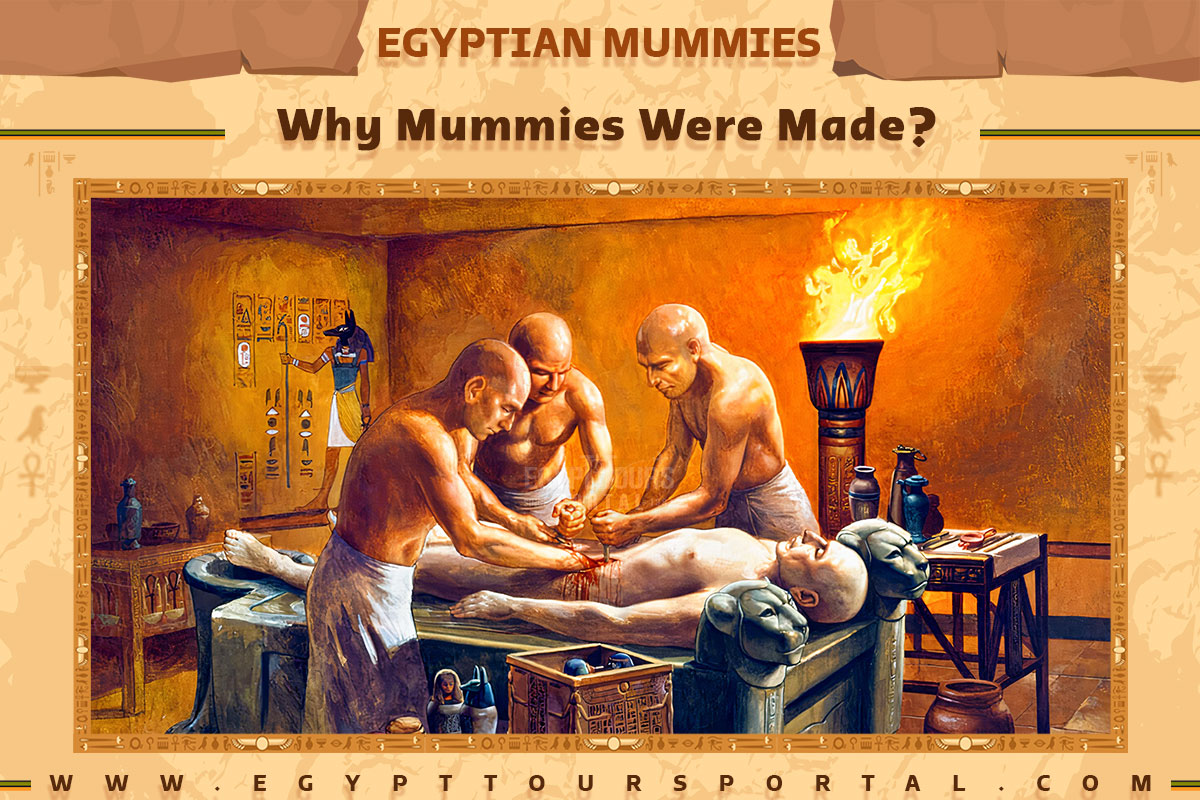
The ancient Egyptians believed in life after death and when a person dies, their spiritual essence still lives, and in order for the soul to survive the body has to remain intact. They believed that the spirit is divided into three parts the Ka, Ba, and Akh. The ka was considered the "Double" of the person, who would stay in the tomb, and offerings and objects were presented. The Ba, or "Soul" is free to fly out of the tomb and return at any time. The Akh, or the "Spirit", would travel through the Underworld with Anubis to attend the Final Judgment with Osiris and entrance to the Afterlife.
The process of preserving the body and turning them into mummies was described in detail in the pyramid texts accompanied by the story of Osiris’s death where the universe fell into utter chaos, and the tears of the gods transformed into materials such as resins, honey, and incense used for the mummification process.
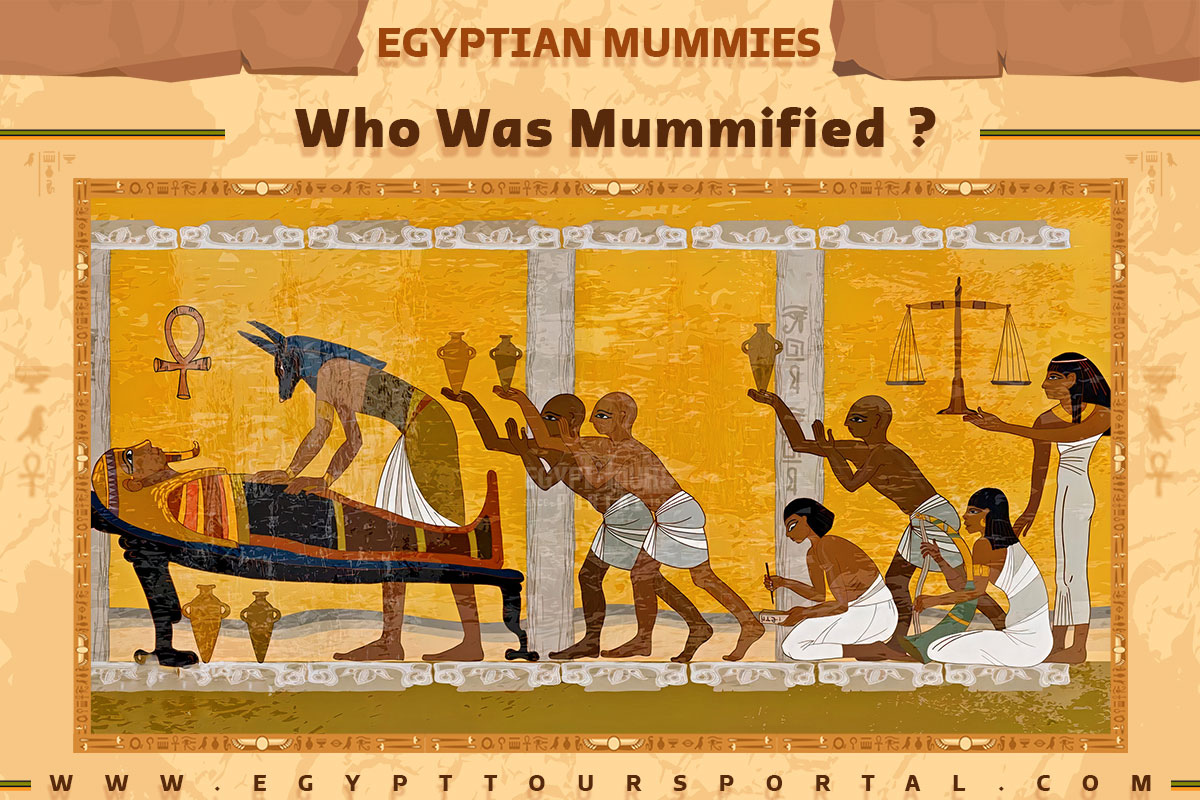
The Pharaohs of Egypt after death were mummified and buried in a highly elaborate tomb to earn their rightful place in the heavens with the ancient Egyptian deities. All members of royal high officials, royalties, society elites, and nobility received the same service and treatment plus all the common people who could offer them which was considered to be expensive. Many ancient Egyptians for religious reasons chose to mummify animals that were considered to be sacred such as bulls, cats, crocodiles, snakes, birds, and more.
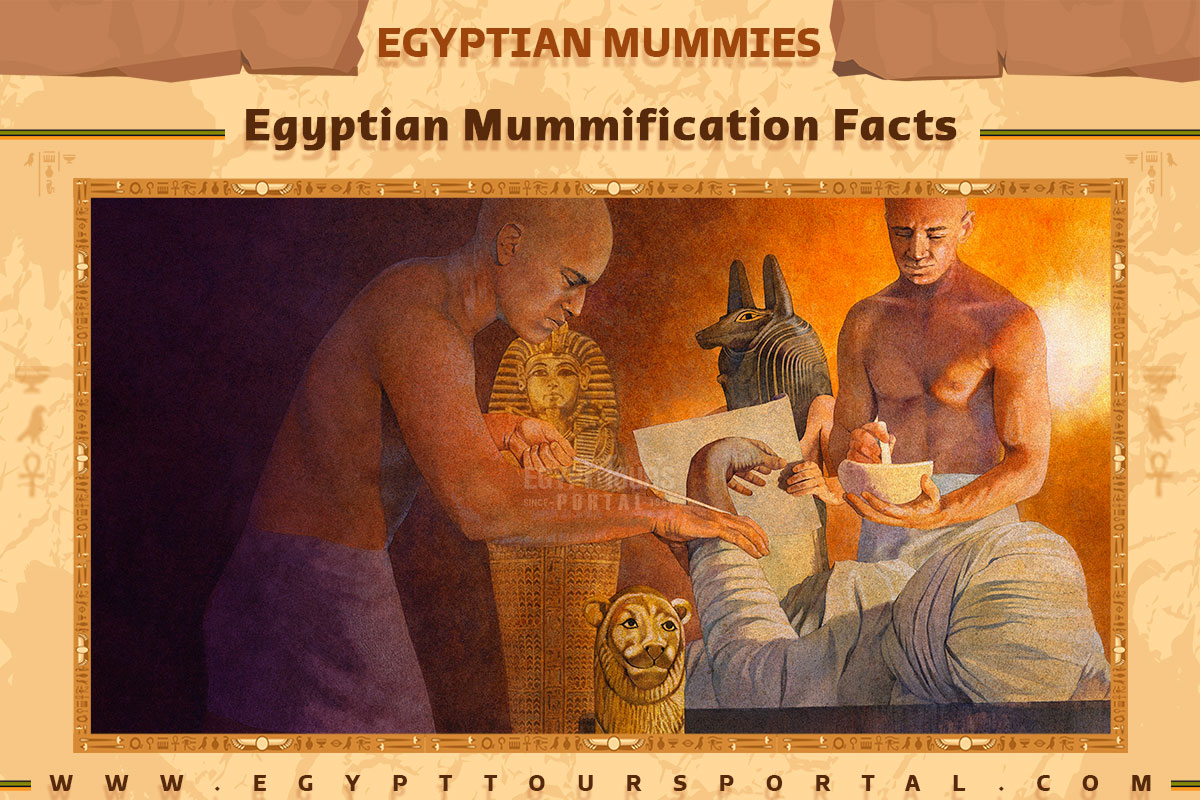
Facts 1: The practice of Ancient Egyptian mummification started accidentally, with bodies preserved in dry sand, but intentional mummification began around 2600 BCE during the Fourth and Fifth Dynasties. The practice evolved over more than 2,000 years, with varying levels of quality based on payment. The best-preserved mummies are from the New Kingdom's Eighteenth through Twentieth Dynasties (ca. 1570–1075 BCE), including renowned pharaohs like Tutankhamun. The ritual of mummification was incredibly analyzed by early historians like Herodotus, who documented it during his visit to Egypt around 450 BCE.
Fact 2: The practice of Ancient Egyptian mummification was very common, and not limited to only the rich or elite. While wealthier individuals underwent an elaborate and more expensive mummification process carried out by professional embalmers, regular Egyptians had more budget-friendly options. Even the poorest could opt for a simple burial where the deceased was wrapped in linen and accompanied by the necessary spells for their journey to the afterlife as seen across all the Ancient Egyptian coffins discovered all over upper and lower Egypt.
Fact 3: In the extraordinary Egyptian mummification process, all the organs like the lungs, liver, stomach, and intestines were carefully removed to prevent decay. These organs were deeply cleaned, dried, and placed in special jars that were then buried alongside the body. The heart, believed to hold a person's emotions and personality, was left in place, as it played a pivotal role in the afterlife judgment.
Fact 4: The brain whose function was not well understood was discarded. Embalmers used a hook through the nose to extract bits of the brain, then the cranial cavity was rinsed. the body was but in natron for over 70 days. The body was then wrapped meticulously in resin-coated linen strips, often around 4,000 square feet for the most elaborate mummies across 40 days. Pharaohs might have been wrapped in linen that previously adorned statues of gods, while common people used strips from household linens. The Ancient Egyptian sarcophagus of the deceased were made of a number of materials like wood, stone, or even gold which featured some of the most enchanting art that was mostly made of spells from the Book of the Dead and titles of the deceased with information about his or her life and achievements.
Fact 5: Animal mummies were also highly common ranging from sacred animals to beloved pets, reflecting different religious and societal practices. it is worth nothing Animals were worshipped as gods, while others were raised for sacrificial purposes like Cats, Ibis, and Cows, plus were buried alongside their owners.
Fact 6: The notion of a "Mummy's Curse" was not a modern invention but had roots in ancient Egyptian beliefs. Tomb inscriptions warned of potential consequences for tomb robbers, invoking the wrath of gods, and even haunting by ghosts. This belief reflected a fear of retribution from the spiritual realm rather than a fear of the mummies themselves.
In conclusion, ancient Egyptian mummification is a profound testament to their intricate beliefs and practices. It offers a window into their spiritual journey to the afterlife, showcasing remarkable craftsmanship and cultural insights. For a firsthand experience of Egypt's wonders, Egypt Tours Portal provides exceptional Egypt vacation packages and Nile River cruises. With expert guides, comfortable accommodations, and seamless transportation, you can immerse yourself in Egypt's captivating history. Choose Egypt Tours Portal for an unforgettable journey into the mysteries of ancient Egypt.
Explore the wonders of ancient Egypt with Egypt Tours Portal. Delve into the rich history of mummification and beyond, guided by passionate experts. Their comprehensive services ensure a seamless adventure, letting you uncover the secrets of Egypt's past while enjoying top-notch comforts and insights.
Private 4 Days Cairo Tour Packages for UAE Travelers 4 days Cairo Egypt Tour package...
Tour Location: Cairo – Giza...
5 Days Cairo and Alexandria Tour Package For UAE Travelers 5 days Cairo and Alexandr...
Tour Location: Cairo/Giza/Alexandria...
6 Days Cairo, Luxor & Aswan Tour Package For UAE Travelers 6 days Cairo, Luxor &...
Tour Location: Cairo/Giza/Aswan/Luxor...
Amazing 7 Days Cairo and Hurghada Holiday for UAE Travelers 7 Days Cairo & Hurgh...
Tour Location: Cairo – Giza – Hurgh...









